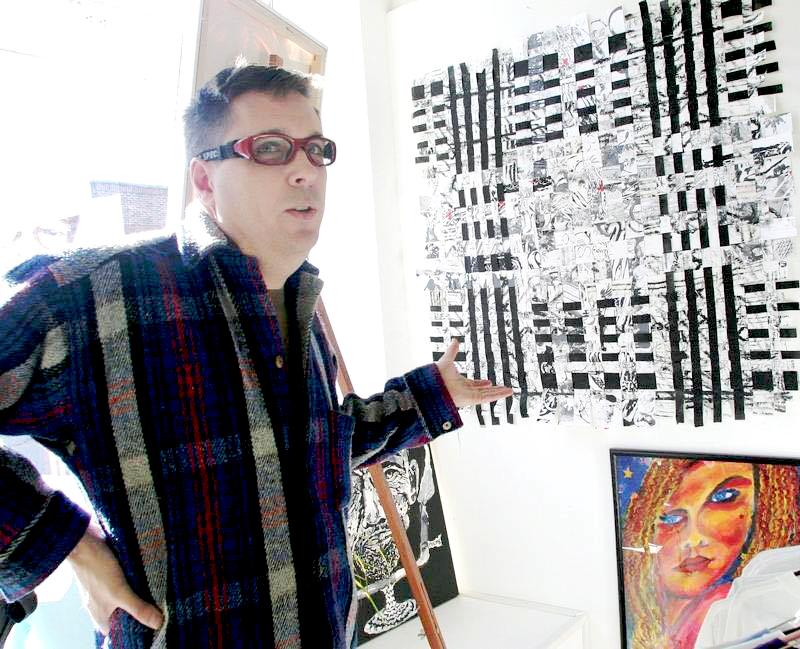Q&A: Artist and veteran, Ken Jacobs
November 30, 2016
Recently, student Ken Jacobs displayed his work in the annual Student Veteran Art Gallery hosted at the Wings Student Art Gallery. With varying technique and media, Jacobs’ work keeps the mind wondering what he had been inspired by. Incorporating his past and future in his work, Jacobs expressed his military background and how he got involved with art.
Caroline: Can you tell me about your time in the military? What branch were you involved with? How long were you in the armed forces?
Jacobs: I enlisted in 1989. I Retired in 2011 at the rank of captain. I was in in the Army. When I was younger, I was adventurous, and now that I am older I greatly appreciate those who are currently serving.
C: Each piece you have in the gallery is not named, is there a reason for this?
J: I think by leaving the pieces untitled, I eliminate any bias the viewer may get from the title. Titles are for things with value. For example, when I write the word “Soldiers”, I always capitalize the word. Soldiers are of great importance. I imagine that most if not all leaders write this way. Soldier in my world is a great title. In contrast, the pieces I have exhibiting are of far less value, and for that matter, do not address anything important, really at all. The sculptures are about materials, space, shape and size. The sculpture that consists of three boards and three marble balls has a real conversation about contrast of wood and stone. The piece has nice space, as it works wonderfully well around the pillar that rises from floor to ceiling in the Wings Student Gallery. There is texture contrast, wood vs stone, dark aged rotted cedar boards, straight, weathered to rough corners and laying upon smooth, fresh, pieces of marble stone, in spheres. This creates a dialogue about time, a fundamental element like materials, shape and size. It creates a sense of balance, the precarious nature of so many things in life.
C: Which piece of your work currently in the gallery has the most symbolism or meaning to you? Why?
J: I like the egocentric globe painting on canvas. Opening day, I spent some time discussing geography with three young students, freshmen I think. That is what really gives me an “Oh, Wow!” moment. When a painting can get students talking, sharing, conjecturing, and reflecting about their role as citizens of the world, I can only conclude that the painting is successful.
C: You use many different media in your work such as ceramics, wood and paint. Why is this?
J: As an artist, I am still a little shy. When I put stuff out there for someone to see, I get a little nervous. So by keeping my themes simple and using found objects, I am protecting my fragile artist’s ego. I also save some cash by using found objects, which is always nice.
C: How long have you been creating art?
J: I have a painting on my wall from when I was in second grade. My mother saved it, framed it, and gave it to me when I got married. The faculty at College of DuPage is what really captured my attention and granted me an opportunity to become a better artist. I had a great awakening on the right side of my brain, when I took Drawing I over at the MAC in 2011. The ability to make art is in all of us. I hope my work inspires others to examine their immediate environment, and explore artistic opportunities.




















